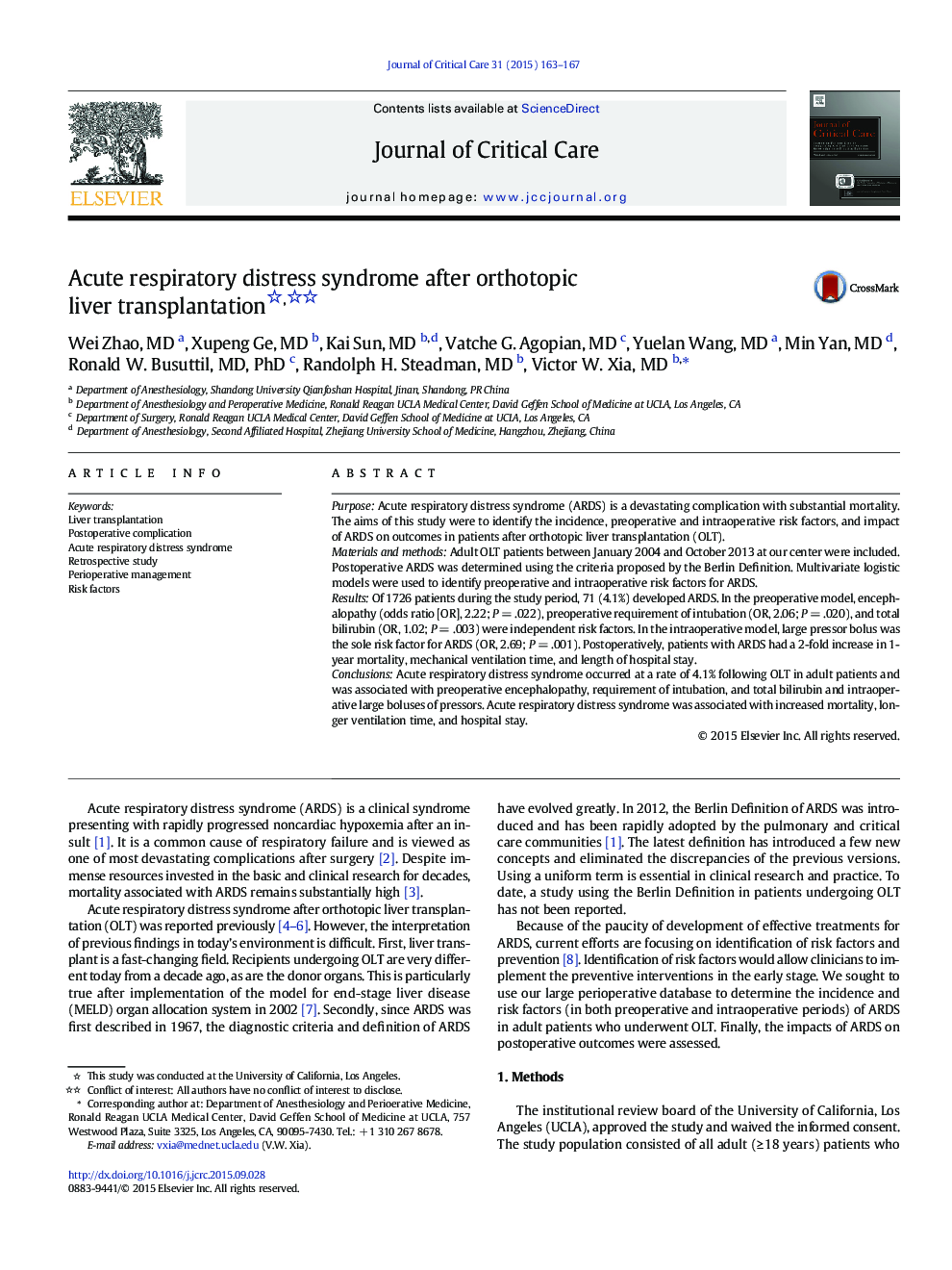| Article ID | Journal | Published Year | Pages | File Type |
|---|---|---|---|---|
| 5885050 | Journal of Critical Care | 2016 | 5 Pages |
PurposeAcute respiratory distress syndrome (ARDS) is a devastating complication with substantial mortality. The aims of this study were to identify the incidence, preoperative and intraoperative risk factors, and impact of ARDS on outcomes in patients after orthotopic liver transplantation (OLT).Materials and methodsAdult OLT patients between January 2004 and October 2013 at our center were included. Postoperative ARDS was determined using the criteria proposed by the Berlin Definition. Multivariate logistic models were used to identify preoperative and intraoperative risk factors for ARDS.ResultsOf 1726 patients during the study period, 71 (4.1%) developed ARDS. In the preoperative model, encephalopathy (odds ratio [OR], 2.22; P = .022), preoperative requirement of intubation (OR, 2.06; P = .020), and total bilirubin (OR, 1.02; P = .003) were independent risk factors. In the intraoperative model, large pressor bolus was the sole risk factor for ARDS (OR, 2.69; P = .001). Postoperatively, patients with ARDS had a 2-fold increase in 1-year mortality, mechanical ventilation time, and length of hospital stay.ConclusionsAcute respiratory distress syndrome occurred at a rate of 4.1% following OLT in adult patients and was associated with preoperative encephalopathy, requirement of intubation, and total bilirubin and intraoperative large boluses of pressors. Acute respiratory distress syndrome was associated with increased mortality, longer ventilation time, and hospital stay.
